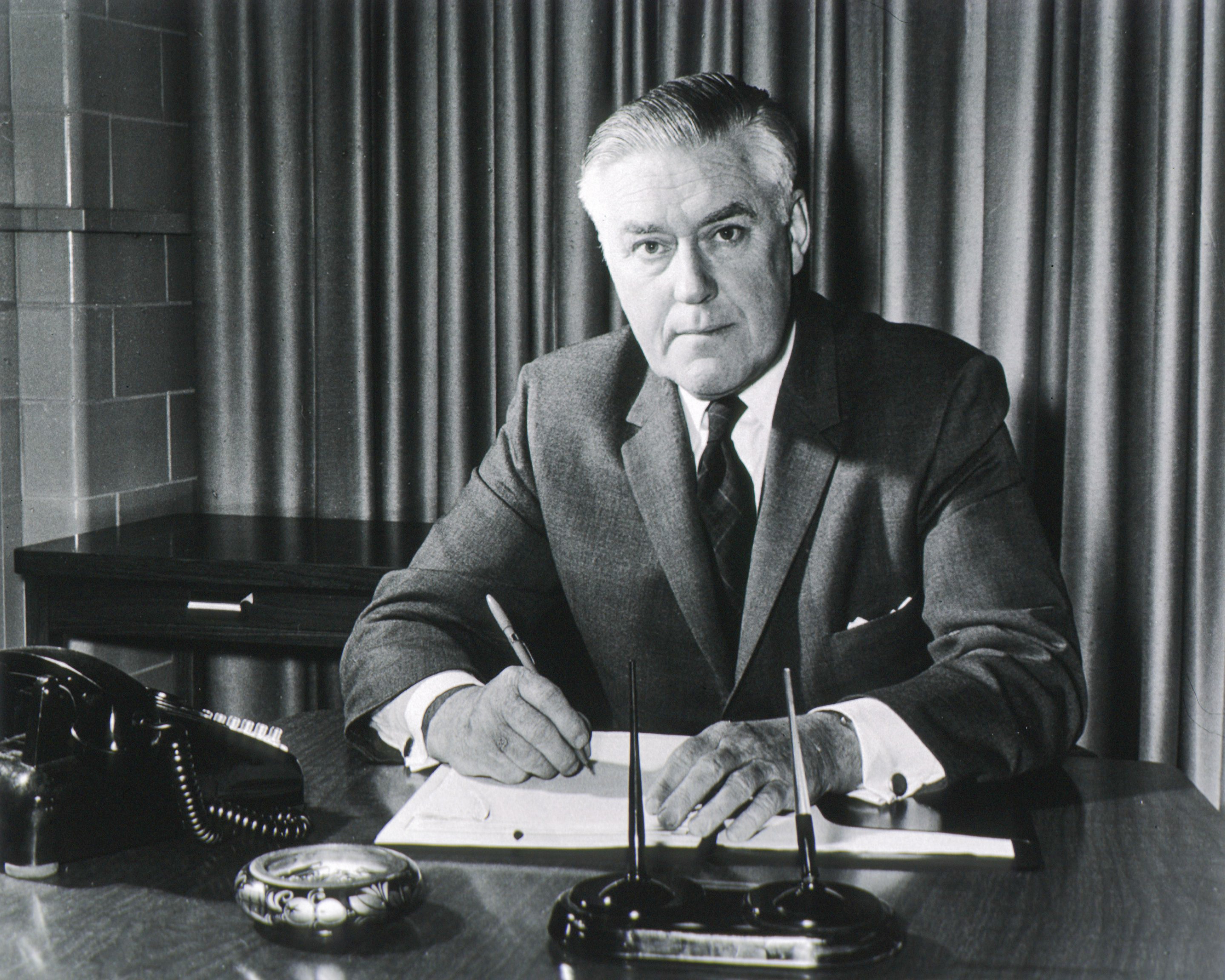Roderick Murray, M.D. (1910-1980)
Roderick Murray was born in Christchurch, New Zealand, and reared in Scotland and South Africa. He earned a bachelor's degree in chemistry and physics from the University of the Witwatersrand in South Africa. He earned a master's degree in organic chemistry from the University of South Africa and a medical degree from Harvard Medical School, having come to the United States in 1937. During World War II, he served for five years in the South Pacific as an infectious disease control specialist in an Army medical laboratory.
Dr. Murray came to the NIH in 1947 as a commissioned Public Health Services (PHS) officer in the Laboratory of Biologics Controls, which later became the Division of Biological Standards (DBS). He was Director of DBS from 1955 to 1972. According to Dr. Ruth Kirschstein, this was not a position he wanted or for which he was particularly well-suited. He had been in the Army during World War II and built a reputable career studying hepatitis. He was a member of Commissioned Corps of the PHS, however, so, he did not have much say in taking the position or not.
Dr. Roderick Murray Portrait in Building 29 National Library of Medicine
When DBS became administratively part of the FDA in 1972, Dr. Murray was appointed special assistant to the Director at the National Institute of Allergy and Infectious Diseases (NIAID). He requested this transfer himself, wanting to stay within NIH. He was also in poor health at this point and had been relying on Dr. Kirschstein to make decisions for many products under review by DBS, in addition to helping him with his administrative duties.
He was the author or coauthor of more than 50 scientific papers, and he received the U.S. Public Health Service Distinguished Service Medal in 1965. He was a fellow of the American Academy of Microbiology and the American Public Health Association and a member of the American Association of Immunologists and the American Medical Association. Dr. Murray retired in 1973 as an assistant surgeon general. He died in 1980.
In February 1961, Dr. Murray informed Dr. Bernice Eddy that her research interests conflicted with her control work on respiratory viruses and that going forward she would be asked to spend time solely on research, and that her staff would be reduced. She refuted this claim and wrote back to the Chief of the Control Activities, Dr. William Workman. She then received a memo in reply from Dr. Joseph Smadel, the Chief of the Laboratory of Virology and Rickettsiology, who told her she was being forced to vacate her current position. It seemed that as long as Dr. Eddy was engaged in basic research with only minor relevance to her control activities, she was allowed to continue her work. But if her research began to identify factors which might require changes in regulatory control of vaccines, her work was to stop. In July 1961, Dr. Eddy began her new role in research only. Much of the treatment of Dr. Eddy was revealed in the hearings in Congress as part of the Consumer Safety Act of 1972.
Dr. Roderick Murray at left, with Dr. Joseph Smadel, at right, the 1962 Lasker Award winner. National Library of Medicine
He worked in Building 8, Room 224 prior to construction of Building 29. He then worked on the first floor of Building 29, Room 129.
Publications:
- “Viral hepatitis” by Roderick Murray in Bulletin of the New York Academy of Medicine (1955). https://www.ncbi.nlm.nih.gov/pmc/articles/PMC1804570/.
- “Biologics for the Control and Therapy of Virus Diseases” by Roderick Murray in Bacteriology Reviews (1964). https://www.ncbi.nlm.nih.gov/pmc/articles/PMC441250/.
- “Human and animal antibody responses to commercial poliomyelitis vaccine” by U. Pentti Kokko and Roderick Murray in the Bulletin, World Health Organization (1960). https://www.ncbi.nlm.nih.gov/pmc/articles/PMC2555319/.
- “Production and testing in the USA of influenza virus vaccine made from the Hong Kong variant in 1968-69” by Roderick Murray in the Bulletin, World Health Organization (1969). https://www.ncbi.nlm.nih.gov/pmc/articles/PMC2427701/.



